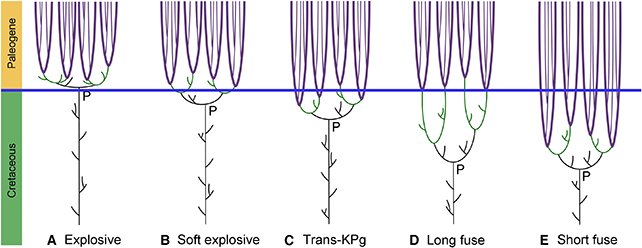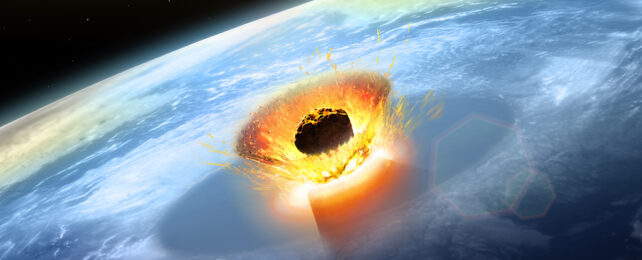There's been a long-standing debate about whether or not the key features that define placental mammals like ourselves emerged in our ancestors before or after the extinction event that wiped out the dinosaurs.
Now that debate may have finally been settled, following an analysis by researchers from the University of Bristol in the UK and the University of Fribourg in Switzerland.
No definitive placental mammal fossils have been found before the dino-killing Cretaceous-Paleogene (K-Pg) mass extinction, 66 million years ago. But the fossil record has yielded molecular clock data that suggests the lineage stretches further back in time, alongside the dinosaurs.
Analyses of molecular clock data 'wind back' genetic changes that occur steadily over time, to pinpoint the common ancestors of species.
Using a new statistical analysis approach, researchers have been able to show how the earliest forms of placental mammals probably emerged in the Cretaceous period, mingling with the dinosaurs for a short period.
"We pulled together thousands of fossils of placental mammals and were able to see the patterns of origination and extinction of the different groups," says Emily Carlisle, a paleobiologist from the University of Bristol.
"Based on this, we could estimate when placental mammals evolved."
The model used by the researchers also shows it was only after the asteroid hit that more modern lineages of placental mammals started to emerge. It's therefore possible that the conditions were better for diversification after the dinosaurs (and a vast number of other species) went extinct.
What's known as a Bayesian Brownian bridge model was used as a basis to estimate the ages of clades – groups of organisms with a common ancestor. This type of statistical model applies probabilities to figure out evolutionary patterns across time spans where there's no hard evidence to be found.

Based on a dataset representing 380 placental mammal families, the researchers estimate that 21.3 percent of them could have stretched back to the Cretaceous.
This included the groups that gave rise to primates, dogs and cats, rabbits and hares. What's more, the simulations matched up well with previous molecular clock data that suggest placental mammals had similarly ancient roots.
"The model we used estimates origination ages based on when lineages first appear in the fossil record and the pattern of species diversity through time for the lineage," says evolutionary biologist Daniele Silvestro, from the University of Fribourg in Switzerland. "It can also estimate extinction ages based on last appearances when the group is extinct."
The team suggests that the model used here is more accurate than using fossil records or molecular data to work out paths of evolution for species, particularly when the number of available fossils is low.
Only a very small number of animals make it to fossil status – it needs a very particular combination of conditions for an organism to be preserved as a fossil – so it's perhaps not surprising that these placental mammals don't appear in the record in their earliest form.
Now the researchers are hoping that the model they've developed can be deployed in other studies too. As more work is done on fossil digitization and organism classification, the results produced by this statistical approach should continue to improve.
"By examining both origins and extinctions, we can more clearly see the impact of events such as the K-Pg mass extinction or the Paleocene-Eocene Thermal Maximum (PETM)," says University of Bristol paleobiologist Phil Donoghue.
The research has been published in Current Biology.
